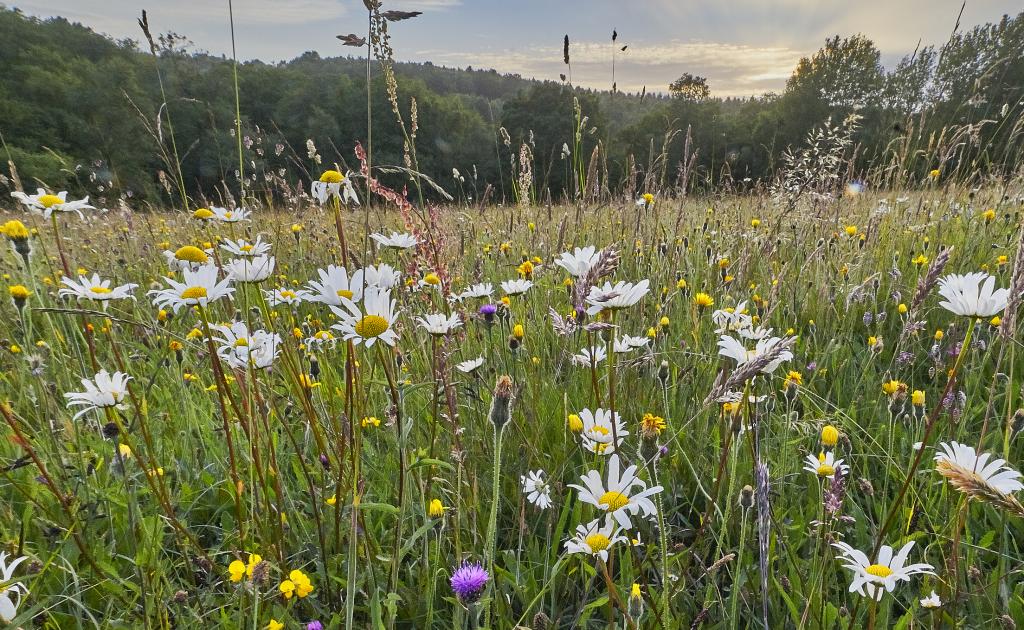
To secure planning permission, all new developments must be able to demonstrate a 10% increase (“net-gain”) in biodiversity. An ecologist will calculate (using a model produced by Defra/Natural England) the existing biodiversity value of the potential development site. The developer must then submit a plan to the local authority showing how it will deliver 110% of that biodiversity value after the development is completed, and maintain that biodiversity for a period of at least 30 years.
The required 10% net-gain in biodiversity can be delivered on the development site itself, but in many cases some or all of it will need to be delivered somewhere else – it is this “off-site” delivery of BNG which brings potential opportunities for farmers and landowners. As well as the 10% net gain, off-site improvements in biodiversity will also often be needed to compensate for the destruction of some of the development site’s existing biodiversity, as developments like housing estates will often significantly reduce on-site biodiversity by covering large areas with concrete and tarmac.
How does off-site biodiversity net-gain (BNG) delivery work?
To establish an off-site BNG project, three things are needed:
- Ecological appraisal – an ecologist evaluates the existing biodiversity of the project site, creating a management plan to enhance biodiversity over the baseline, sustained for 30 years.
- Legal commitment – the landowner establishes a legal agreement, typically with the local authority or conservation groups, committing to implement the ecologist’s plan and ensure biodiversity improvements for at least 30 years.
- Buyers – developers, generally working in the same local authority area, purchase “biodiversity units” generated by increased biodiversity on the project site.
Some landowners are choosing to do this themselves – taking all of the risk, but also all of the reward if everything works out. There are also a range of companies operating in this sector who will partner with landowners to deliver off-site BNG in exchange for a slice of the rewards. There are several different models for this sort of partnership, and the right one will depend on a particular landowner’s attitude to risk and how involved they want to be in delivering the BNG.
What are the potential benefits?
Apart from improving the environment, the most obvious benefit is the revenue generated through the sale of the biodiversity units. As with more familiar options like renewable energy, holiday letting and campsites, BNG may offer landowners a way of diversifying their businesses, and perhaps also a means of generating a meaningful income from marginal land which is otherwise unproductive.
At present, it is difficult to say what sort of figures may be achievable as the market for BNG is very new. Some eyewatering numbers are being thrown around by companies seeking to partner with landowners to generate off-site BNG – tens of thousands of pounds per acre, and so well in excess of the value of the land itself. Whether this proves realistic remains to be seen, and the revenue from selling biodiversity units also needs to be set against the likely reduction in the land value.
What are the potential risks and drawbacks?
As this area is so new, it is difficult to say for certain, especially given that BNG projects need to last for at least thirty years. However, the following are worth noting:
- The market for BNG is artificial – biodiversity units currently have value because government policy means that developers must provide BNG. If the government changes its mind, the value of biodiversity units could collapse overnight. The agricultural sector is well used to this, given the previous abolition of similar artificial commodities like milk quota and BPS entitlements. In particular, this could happen if the cost of delivering BNG is flagged as causing a further increase in already sky-high house prices, or if the government becomes more concerned about food security and so looks to increase food production.
- Costs over thirty years – the revenue from the generation of BNG comes very early on, when the biodiversity units are sold. That sounds like a good thing, but it needs to be set against the fact that the habitat improvements need to be maintained for at least 30 years – it is therefore critical that enough of the revenue is set aside to cover the ongoing costs, or some other plan is put in place to fund them. However, landowners must be aware the improved biodiversity have to be maintained throughout the thirty-year period even if that proves more expensive than anticipated (and even if the cost ends up exceeding the revenue from selling the biodiversity units). That could be because of significant inflation, or climate change making everything more difficult and expensive, or from a simple miscalculation of what the costs would be (including a scenario where habitat improvement works fail and have to be redone).
- Insolvency – if the landowner partners with a third party to deliver the BNG project, care needs to be taken to safeguard the landowner against that third party going bust or disappearing. Take a scenario where the third party keeps a substantial proportion of the proceeds of the sale of the biodiversity units in exchange for agreeing to carry out the habitat management across the thirty-year period. If that third party then goes bust, the responsibility for managing the habitat will fall back on the landowner, but the cash kept by the third party to fund the management may have disappeared. There are several ways of avoiding this issue, but it needs to be considered with real care and I recommend you seek legal advice.
- What happens at the end of the thirty years? It is naturally very difficult to guess what the political environment will be like in thirty years’ time, but one realistic possibility is that significantly more stringent environmental protections will have been put in place. It may then be very difficult to return the BNG project site to productive agricultural use. There is even a concern that the environmental improvements made to generate BNG could lead to some sites being designated as Sites of Special Scientific Interest or similar, which would drastically curtail landowners’ freedom to manage them in the future.
- Landowners’ own need for BNG – the need to demonstrate a 10% net-gain applies to all planning applications, including things like new farm buildings and infrastructure. Landowners need to be careful not to sell all of the potential BNG on their land, only to then discover that they need some themselves to secure their own development plans.
- Tax – as ever when generating new streams of income, advice should be sought from an accountant or tax advisor to ensure that the project is structured as efficiently as possible, and to ensure that there are no unwelcome tax surprises.
If you wish to discuss anything raised in this article, please contact our Rural team for further advice.
